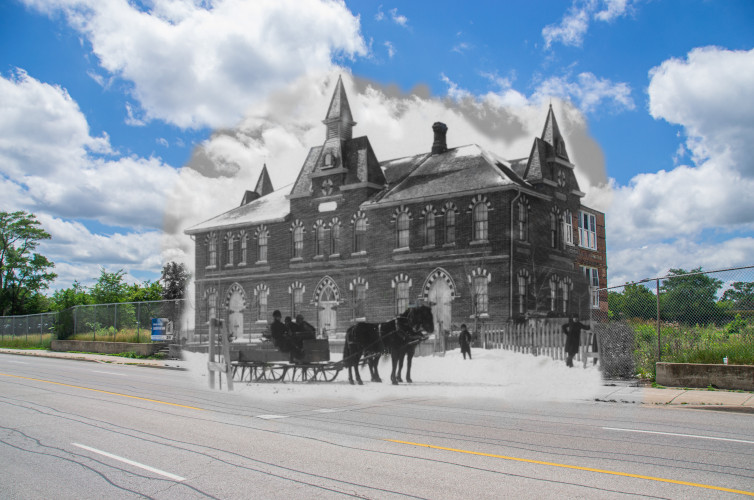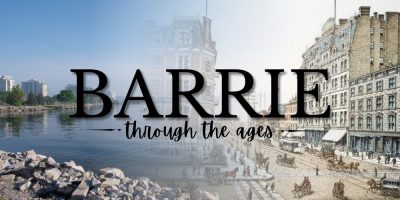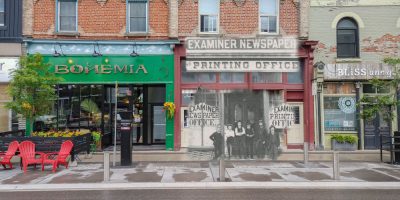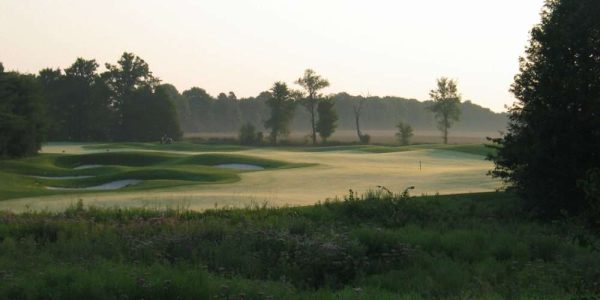
You might know it as Prince of Wales Public School today. But when it first opened, it was called West Ward School. And it was the oldest public school ever built in Simcoe County. To understand its story, we need to look back a few decades before its construction.
Early education in Upper Canada
Prior to the early 19th century, schooling wasn't a right, it was a privilege of the wealthy. Even after government-aided schools were introduced in 1807, students still had to pay tuition. That meant many children were not able to attend.
Barrie's News Delivered To Your Inbox
By submitting this form, you are consenting to receive marketing emails from: Central Ontario Broadcasting, 431 Huronia Rd, Barrie, Ontario, CA, https://www.cobroadcasting.com. You can revoke your consent to receive emails at any time by using the SafeUnsubscribe® link, found at the bottom of every email. Emails are serviced by Constant Contact
Following the end of the War of 1812, discussions about schools for the common people continued. In 1816, Upper Canada passed The Common Schools Act. It provided education grants and created school boards in ten districts: York, Kingston, Brockville, Hamilton, Cornwall, Prescott, Port Hope, Picton, Cobourg, and London. Communities in these districts could build a school and hire a teacher if they had at least 20 students.
Demand for schools grew so fast that another law had to be passed just to slow things down.
In 1840, Upper and Lower Canada became the Province of Canada. The following year, in 1841, the School Act for the United Province of Canada was passed. This new act allowed for non-denominational "Common Schools" in Upper Canada and Protestant and Catholic schools in Lower Canada. A tax of 25 cents per student was levied each month as a tax for schooling with a limited number of free seats available to poor children.
Schooling becomes free for all
Another pivotal shift came in 1846 with the introduction of the Common School Act. Championed by Egerton Ryerson, this legislation marked the first time Upper Canada had a comprehensive plan for how schools should function. At its core, the act aimed to bring consistency and oversight to a scattered network of local schools.
One of its key features was the establishment of district superintendent. The act introduced school superintendents. These officials were responsible for inspecting schools each year. Their job was to make sure schools met standards, especially if they were getting government funding. The act also laid the foundation for local governance, spelling out how school trustees should be elected to help manage school affairs.
Interestingly, the legislation also acknowledged the diverse beliefs of families. It included a clause that protected children from being compelled to take part in religious teachings their parents objected to.
To support the growing system, the act introduced a school tax. It required parents of school-age children to contribute financially through a rate bill. Standardization was another major goal. Ryerson promoted a list of officially sanctioned textbooks, warning that schools choosing unapproved materials would lose access to public funds.
By 1850 the Common School Act required a school tax to be levied on all property and not just the parents of school-age children. It also marked a major shift. Education would now be free for all children, funded by both provincial and municipal governments.
But the act wasn’t perfect. It also gave the green light for separate schools. This led to the creation of racially segregated schools.
The West Ward School is built in Barrie
Fast forward to 1854, with schooling finally a free guarantee for all citizens, Barrie built its first real common school. The school outgrew itself after only a year. A second school was built soon after, with extensions to being made one year later due to continued growth.
By 1871, school was not only free for all children but had become compulsory for those ages 7 to 12. To address the higher attendance, another school was built in 1871 at the corner of Collier and Owen St. This school was called the Barrie Public School, later named Central School and eventually Victoria School.
As Barrie grew, so did attendance and within four years the school was full. The city decided it would build two more schools, one in the East, and one just on the West edge of Downtown Barrie, which at the time was filled with residential housing.

The west end school would begin it's life as the West Ward School, but would later be renamed in 1920 to commemorate a visit by the Prince of Wales to Canada. Following the end of each World War, the school was renovated and additions were made in response to growing attendance.
By 1947, the school had 647 students. But as businesses quickly began replacing homes in the downtown core, families began to move away and by the late 80s there was only 195 students.
By 1987, Prince of Wales would be the oldest school in Simcoe County still operating under its original purpose.
The school no longer stands
Over the years, Prince of Wales continued to grow and evolve. Eventually it would become a French Immersion school, educating students from across Barrie in both English and French. However, ongoing and worsening disrepair that was not cost-effective to maintain would lead to the closure of the school in June 2011. Former students from the school were relocated to Hillcrest Public School.
If you want to learn more about The West Ward School/Prince of Wales Public School and all of Barrie’s history, head over to the Barrie Historical Archives, Barrie’s online museum. It’s full of pictures, videos, audio, and documents spanning nearly 200 years and it’s completely free!
Be sure to check back soon for more in our Barrie Through the Ages series and we'll also be updating this interactive map so you can explore Barrie’s history yourself!
RELATED: Learn more about Barrie's history ...











